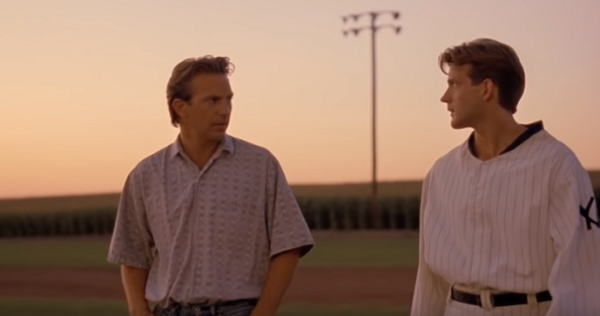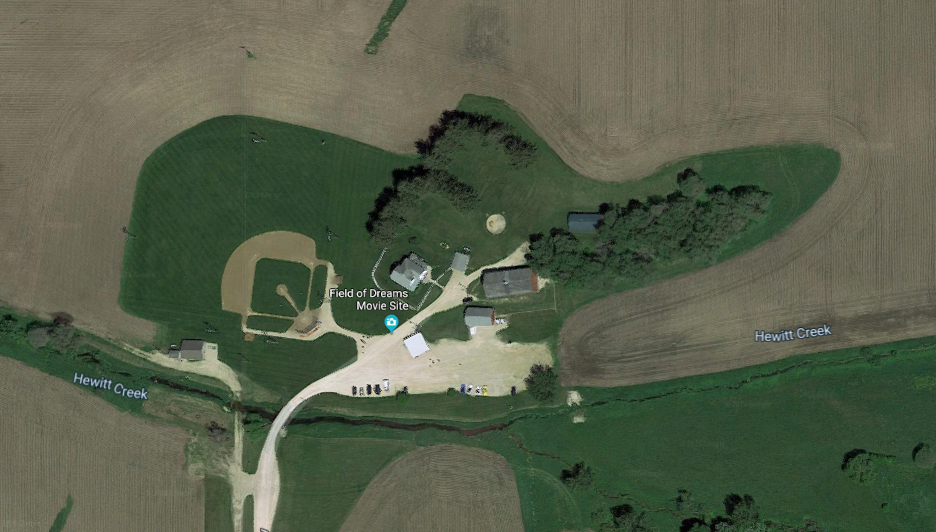
In the age when computer operating systems worked on a salad diet of 8 megabytes or less, and diskettes allowed digital emulation in the dawn of gaming, research involved sifting through 3 by 5 cards while employing an artful tenacity. The summer of 1989 was immersed in a fascinating under an analog sea by today’s standards, as the electronic universe was just a nepionic minuscule node policed by cyber jockeys sharing ASCII art through dedicated phone lines, modems and billboards as the precursor to web domains.

Provocative ASCII art usurped the pin-up girl poster hangin in the locker, as moms were wary of their son’s cryptic search for carnal pleasure via the modem.
Hollywood did not rely on sophisticated CGI graphics, frenetic jump cuts, and garish dialogue, in producing timeless classics. Three decades have whisked by since Kevin Costner and “Field of Dreams” enamored and liberated the hearts and souls of audiences in uniting baseball fans and general movie goers with no knowledge or love for the sport alike, as tears were secretly and sometimes openly shared by a diverse representation of the American people.
With online resources such as baseballreference.com, the modern research process is efficiently exhilarating in discovering the record of the obscure but illuminating “Moonlight” Graham (it beats the library catalog system), who reached the major league baseball stage as a defensive replacement, and the gods decreed that his professional sports career would abruptly end precisely at that moment. The pre-database long form archaeological finding of such a cherished treasure and uncovering the real life story that Graham took reality in stride and chose to pursue a medical degree only to return to his childhood home as a physician, is one of the poignant narratives interwoven into the script that resonated and still resounds with all folks of all ages and demographics. The character of Graham, played by the iconic Burt Lancaster, gently suggests to lead Kevin Costner, that there may be a force somewhere in the abyss where anything is possible and is metaphorically conjured amid the moonlight. Fortunately, in a world that is being torn apart at the fabric of sensibility and decency, major league baseball has decided to give society at least a momentary respite from the blind madness by physically immortalizing the movie, a act of goodness and gesture of peace that transcends the ethereal.
Dyersville, Iowa is a real town literally at the vortex of endless growths of corn, and the primary filming location for “Field of Dreams”. It is home to a sparse population of hard working families, and the middle of nowhere in the trendy hierarchy of cities and popular culture. Tourists and baseball prophets alike tour the legendary diamond of a movie set, with some coming to reflect and others venturing to learn. MLB is planning to take the experience up to the next level, reports NPR, as the professional sports syndicate will play an actual regular season game on the property next year. In an interesting match-up on a multitude of levels, the New York Yankees will battle the Chicago White Sox, drawing up parallels from the movie and capturing the visceral element for legions of fans.

Where fantasy and reality hug and shake hands in the fertile Iowa farmlands. (Google Maps)
While the Yankees are the proverbial serial winners and loathed outside of their core fan base, “Shoeless” Joe Jackson was an integral part of the of the “Field of Dreams” plot, and appears before Costner after the inexplicable construction of the baseball field in prime farm land. Of course the real Jackson was marred in glory and scandal during his epically volatile career in which he played at a hall of fame level, but never reached official enshrinement and recognition due to his alleged part in fixing the 1917 World Series by selling his team short to a wealthy group of bookies. In the movie, the audience learns the backstory of Costner and his father becoming estranged after an heated argument where Costner’s character refers to his father’s hero Jackson as a crook. It is painstakingly revealed that Costner’s youthful impudence is the last interaction he has with his dad, and his father passes away a few years later. The abyss is ultimately conquered in the legendary final scene during an effulgent twilight game of catch on the grass of an empty field save for a father-son pair of forgiveness and foreshadows that there may be more in store for the charming rural corners of Iowa. Lessons of retribution, faith, and the undying human spirit which is capable of a drastic transformation fill the soul with a searing dosage of gratifying wonderment.
Voila, the game is scheduled for an August date in 2020 and the White Sox will host the match-up conjured by the morpheun wishes of the many who visited the climatic raw emotional of the cinematic through the Iowa heartland afterlife and divine experience multiple times, only to awaken in the morning. 8,000 tickets are theoretically available to fill the temporary bleachers, and Fox will broadcast the entire affair nationally.
As the MLB struggles to exist in the same universe of popularity with the NFL, and licks its wounds from doping scandals and head-scratching rules changes, appealing to the imagination and nostalgia of fans may rekindle a burgeoning love for a brand that refers to itself as “America’s Pastime”. A strategic spiritual guided project to build it and wait and see, is not a bad idea considering what is at stake.
Read the NPR story here.
WATCH: The universe is not always cruel in isolated instances.